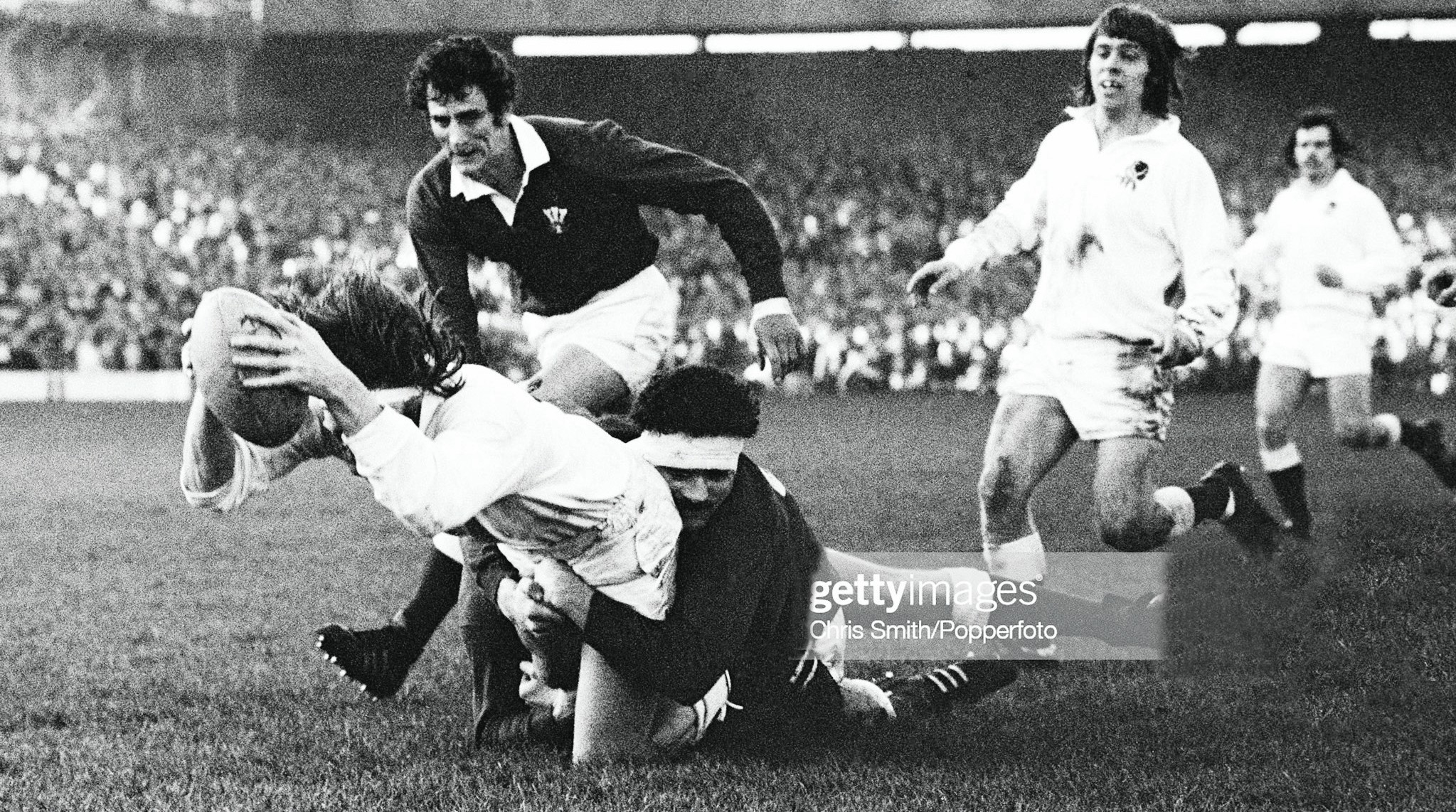Ripley breaks England drought against Wales

Brendan Gallagher delves into some of rugby‘s most enduring images, their story and why they are still so impactful
Iconic Rugby Pictures: PART 107
Andy Ripley beats Mervyn Davies’ tackle to score for England March 16, 1974
What’s happening here?
It’s March 16, 1974 and England are playing Wales at Twickenham. It’s early in the second half and England are taking the lead through their No.8 Andy Ripley who has shrugged off a tackle from opposite number Mervyn Davies. In the background is Wales flanker Dai Morris while also appearing further back are England scrum-half Jan Webster and centre Geoff Evans.
The story behind the picture?
It’s difficult for the modern generation to grasp what a stranglehold Wales had over England for the best part of 30 years during the 60s, 70s and 80s. Before this win England’s last victory had been in Cardiff in 1963 and after this triumph their next victory didn’t come until 1980.
So there was fear and excitement before this encounter. Fear because defeat had become the norm against the Welsh magicians. Excitement because hope springs eternal and objectively England possessed an epically good and intimidating pack in 1974 – all eight forwards were past and future Lions during a vintage era when the Lions didn’t call up Uncle Tom Cobley and all by way of cover. The names roll off the tongue: Stevens, Pullin, Burton, Uttley, Ralston, Dixon, Ripley, Neary. Just two weeks earlier England has claimed a hard-earned 12-12 draw with France in the lion’s den of Parc des Princes.
Emotions were also high. The day after the fine draw, 176 British passengers – the majority being England fans over for the game – were returning to Britain on Turkish Airlines Flight 981 which had stopped at Orly en route from Istanbul to Heathrow. Minutes after take-off it exploded after an incorrectly secured door had blown open and crashed at Ermenonville with the death of all 346 people on board. Among those were 18 members of the Bury St Edmunds club who had been on tour in Paris for the game.
What happened next?
Glory be! England only went and won, and deservedly so. Wales were fully booted and suited save for JPR Williams – it was their full monty legendary 70s line-up so no real excuse although the loss of JPR was a blow in fairness. He famously never lost against the English.
David Duckham and Ripley scored tries for England, the former after a sharp break by Geoff Evans and the latter from a scrum five.
Alan Old added a conversion and two penalties while for Wales, Mervyn Davies scored and Phil Bennett kicked the conversion and a brace of penalties. Wales finished strongly but England held firm.
Why is this picture iconic?
This win and this try caused joy like you will never believe among England fans. For too long they had been getting it in the neck every Monday morning after a Five Nations game from ebullient Welsh friends. At the office, at school – where Welsh teachers seemed to run English Schools rugby – and down at the club where they had also made themselves part of the furniture. For 51 weeks of the year they were perfectly affable, modest, humorous valued friends, colleagues and coaches but then, for a short period after every Wales win, they turned into cruel tormentors.
So there is much emotion invested in this picture but there is another dimension. This is also the culmination of a surprising mini golden period within a dark era for English rugby. We are probably all acquainted with England’s shock wins in South Africa in 1972 and then New Zealand the following year and they competed a notable southern hemisphere sweep in November 1973 with a fine win home over Australia.
But everybody forgets this belter over the old enemy, possibly the world’s best team at the time. As a teenage rugby fan this is the victory that resonated loudest and as somebody who was there I can vouchsafe it was slightly more comfortable than the score suggests.
And then there are two of my great heroes and sweatband pioneers in direct opposition. Ripley –a starter in all four of those England triumphs – and Merv the Swerve.
For me they represent the 70s in excelsis; Ripley long haired, laid back, T-shirt King and very west coast while Merv was all moustache, sideburns, suede hushpuppies, brown chords and cigarette smoke.
In the background Webster and Evans also do a nice line in sideburns and taches. Musically this image must be set against a compilation tape of Slade, Steve Harley and Cockney Rebel, Mud and Sweet, even though I know for a certain fact that Rippers also had a penchant for what we called Prog Rock – Wishbone Ash, Led Zeppelin, Emerson Lake and Palmer – and South African township jazz.
Footnote: Could Rippers displace the great Welshman as the Lions starter down in South Africa? He started well, it looked like a 50-50 shout, but then Ripley picked up a minor injury and lost a little momentum. Merve played – brilliantly – in the First Test in the mud of Cape Town and couldn’t be dropped after that but you still wonder how Ripley might have caused carnage against a lumbering Boks pack on the parched grounds of Pretoria, Johannesburg and Port Elizabeth.